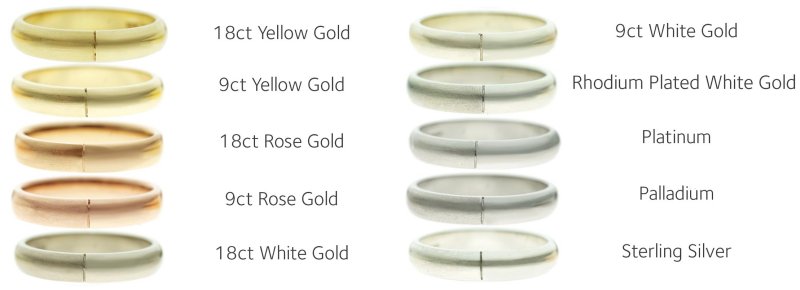The color of gold
Different colors of of gold are obtained by alloying gold with other elements in various proportions. For example:
- Yellow gold: an alloy of copper, silver and gold
- White gold: an alloy with silver will color gold white, also nickel, manganese or palladium
- Red gold: an alloy with copper will color gold red
A common yellow gold formulation is a mix of around 50/50 copper and silver, this gives jewellery the range of yellow gold alloys that we are accustomed to seeing in the marketplace. A small amount (0.2%) of zinc can be added to harden the alloy.
White gold is an alloy of gold and at least one white metal, usually silver, nickel, manganese or palladium. A common white gold formulation consists of 90 wt.% gold and 10 wt.% nickel. Copper can be added to increase malleability.
Rose, pink or red gold is a gold and copper alloy used for specialized jewellery. It was popular in Russia at the beginning of the nineteenth century, hence also known as Russian gold.
More unusual colors of gold are green gold, grey cold black gold, purple gold and blue gold.
Here are some examples of the precious metals we work with most frequently. We also can work with customers' own jewellery in other metals such as 22ct gold and 14ct gold which is more commonly used internationally. We have even been known to work with different alloys for a specific purpose, for example adding 9ct gold to 22ct to build up durability.


